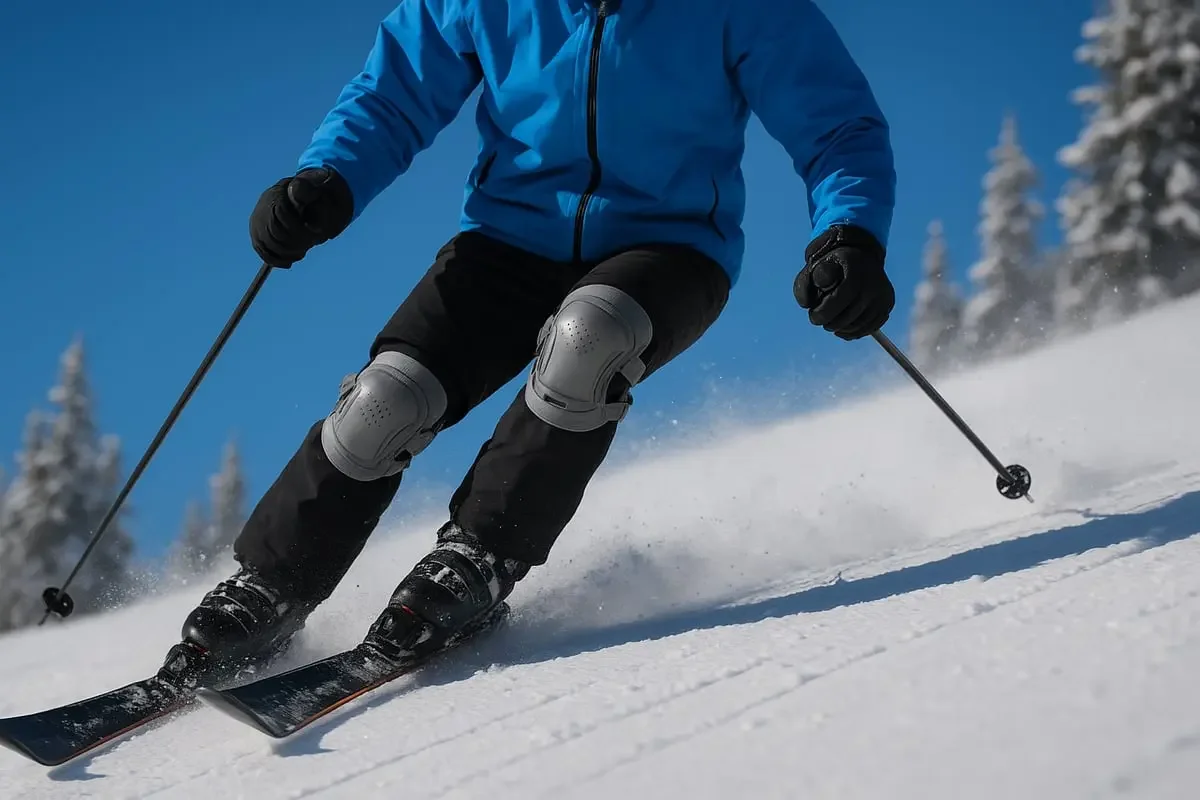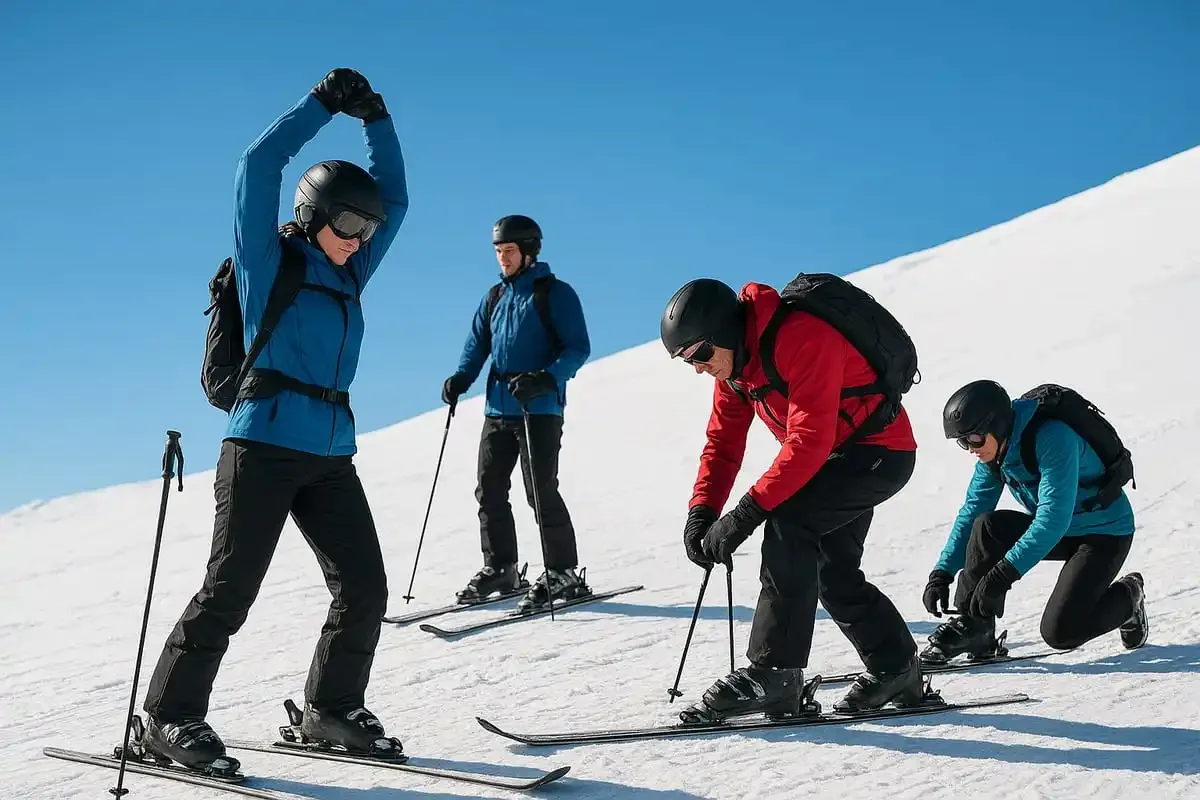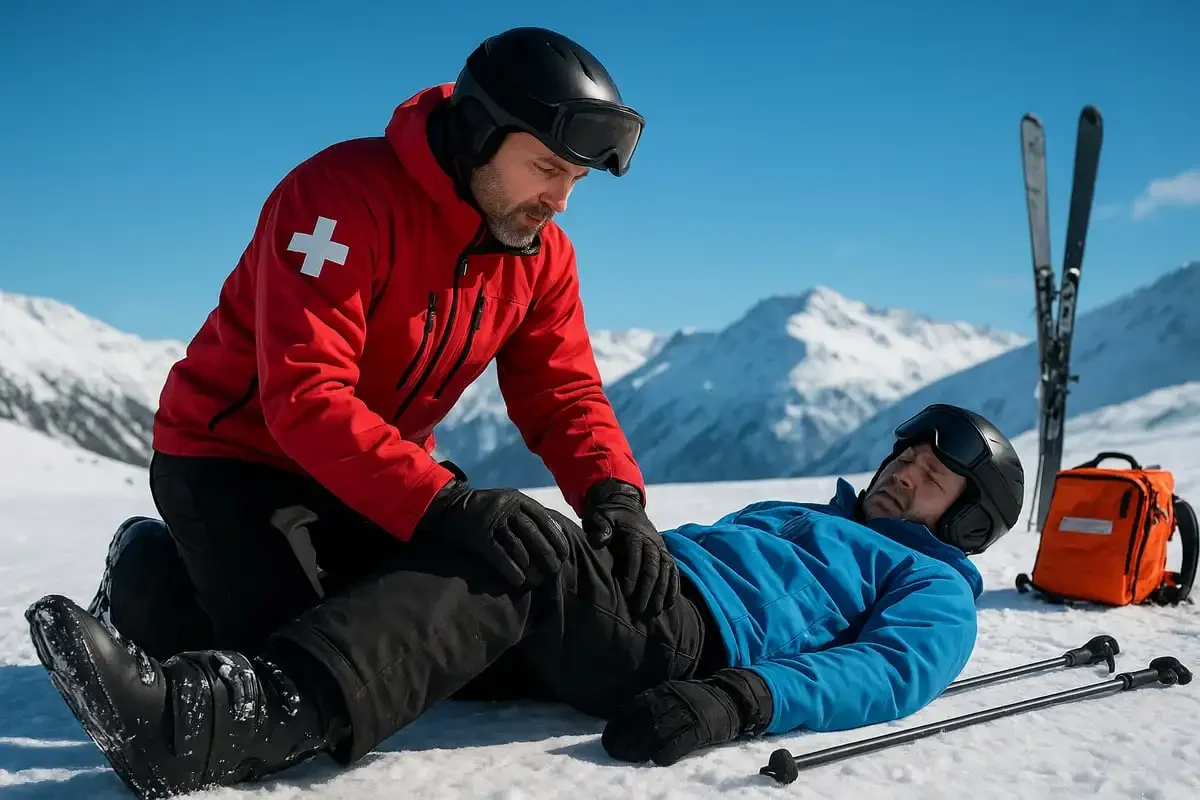7 Essential Skiing Injuries Prevention Tips
Skiing continues to surge in popularity in 2025, drawing both seasoned athletes and newcomers to the slopes. With this growth, the risk of skiing injuries becomes an increasing concern for everyone eager to enjoy the winter season. Common skiing injuries include ACL and MCL tears, skier’s thumb, shoulder dislocations, concussions, wrist fractures, tibial fractures, and spinal injuries. This article is designed to arm you with practical, expert-backed strategies to help you stay safe and injury-free. Discover seven essential tips that will empower you to prevent skiing injuries and make the most of your time on the mountains.
Understanding Common Skiing Injuries
Skiing remains one of the most exhilarating winter sports, but its risks cannot be underestimated. As participation continues to climb, skiing injuries have become a growing concern for both newcomers and seasoned athletes. Understanding which injuries are most common, why they happen, and who is most at risk is the first step toward prevention.
The Most Frequent Skiing Injuries
Skiing injuries can affect nearly every part of the body, but certain types are especially prevalent. Here is a list of the most common injuries seen on the slopes:
ACL and MCL Tears: These knee ligament injuries account for up to 30% of all skiing injuries. They often occur during twisting falls or when the ski does not release properly, placing immense stress on the knee.
Skier’s Thumb: A tear of the ulnar collateral ligament in the thumb, typically caused by falling while holding a ski pole. This injury can make gripping objects difficult.
Shoulder Dislocations: Common when a skier falls forward or lands awkwardly. Shoulder injuries may also include rotator cuff strains and fractures.
Concussions: Head impacts from collisions or falls can result in concussions. Even with helmets, brain injuries remain a significant concern.
Wrist Fractures: Often caused by bracing against a fall with an outstretched hand, leading to broken wrists or forearms.
Tibial Fractures: The lower leg is vulnerable, especially if the ski twists during a fall. These fractures can be severe and require long recovery periods.
Spinal Injuries: Though less frequent, spinal injuries are among the most serious skiing injuries. High-speed crashes or falls from significant heights can lead to lasting consequences.
Beginners tend to experience more falls, leading to wrist and thumb injuries, while advanced skiers are more likely to suffer high-impact injuries such as ligament tears or concussions. Environmental factors, including icy conditions and crowded slopes, can further increase the risk of skiing injuries. Equipment issues, such as poorly adjusted bindings or ill-fitting boots, also contribute significantly.
Why Prevention Is Critical for Skiers in 2025
The 2025 ski season is expected to see record numbers of participants. Increased traffic on slopes means a higher chance of collisions and accidents, elevating the risk of skiing injuries for everyone.
While advancements in ski technology and protective gear have helped reduce certain types of injuries, improper use or lack of maintenance can still lead to accidents. For example, a binding set too tightly may not release during a fall, increasing the likelihood of knee injuries. Conversely, loose bindings can cause loss of control.
The consequences of skiing injuries extend beyond the physical. Recovery times can range from a few weeks for minor fractures to several months for ligament tears or spinal injuries. The emotional impact of being sidelined, combined with financial costs of medical care and rehabilitation, adds further stress.
Long-term studies have shown that some skiing injuries, particularly those involving joints or the spine, can lead to chronic pain and mobility issues later in life. Proactive prevention is essential not only to avoid immediate harm but to protect long-term health and skiing enjoyment.
Ultimately, understanding the risks and taking appropriate steps to minimize them empowers skiers to enjoy the mountains safely and confidently.
7 Essential Skiing Injuries Prevention Tips for 2025
Every skier, whether novice or expert, faces the risk of skiing injuries each season. Understanding how to prevent these injuries is essential for a safe and enjoyable experience on the slopes. Below, you will find seven critical tips designed to help you stay injury-free in 2025. But first, let us look at a list of common skiing injuries.
Common Skiing Injuries Table
Injury Type / Description / Typical Cause
ACL/MCL Tears / Ligament tears in the knee / Twisting falls, awkward landings
Skier’s Thumb / Ligament injury in the thumb / Falling while holding a ski pole
Shoulder Dislocation / Joint displacement in the shoulder / High-impact falls
Concussion / Brain injury / Collisions, head impacts
Wrist Fractures / Broken wrist bones / Falls on outstretched hand
Tibial Fractures / Shinbone breaks / High-speed crashes
Spinal Injuries / Damage to the spine / Severe falls, jumps
These injuries can have a significant impact on your health, performance, and enjoyment of the sport. The following prevention tips address each risk factor and offer practical solutions.
1. Prioritize Pre-Season Conditioning and Strength Training
One of the most effective strategies for reducing skiing injuries is building strength, flexibility, and balance before the season begins. Strong muscles and joints are less likely to get injured during sudden twists or falls. Targeted exercises, such as squats, lunges, plyometrics, core workouts, and agility drills, can significantly enhance lower body stability.
Cross-training activities like cycling, swimming, and yoga improve cardiovascular fitness and mobility, further decreasing the risk of skiing injuries. Research shows that skiers who engage in regular conditioning programs experience fewer knee and ligament injuries. In fact, a recent study on the relationship between lower extremity fitness and injury risk found that improved fitness levels directly correlate with reduced skiing injuries.
Consulting with a professional trainer or a practitioner like a sport chiropractor or physiotherapist can help tailor your routine to your needs and further minimize your risk of skiing injuries.
2. Invest in Properly Fitted and Maintained Equipment
The right gear is your first defense against skiing injuries. Boots, bindings, and skis must fit your body type and match your skill level. Ill-fitting boots can cause blisters or ankle sprains, while incorrect binding settings may not release during a fall, increasing the chance of knee or tibial fractures.
Advancements in ski technology for 2025 have led to lighter, more responsive materials and improved safety features. However, even the best equipment can contribute to skiing injuries if it is not regularly maintained or professionally fitted. Annual checkups by a ski technician are essential.
Before every outing, inspect your gear for damage and ensure that your DIN settings are appropriate for your weight and ability. Many injuries on the slopes result from ignoring minor equipment issues, so do not overlook this step.
Schedule annual professional fittings
Replace worn-out boots or bindings
Clean and tune skis regularly
Test binding release mechanisms
Proper gear maintenance helps prevent both minor and severe skiing injuries, allowing you to ski with confidence.
3. Master Safe Skiing Techniques and Fall Strategies
Technique plays a critical role in preventing skiing injuries. Maintaining a balanced stance, keeping your weight centered, and using proper edge control are foundational skills for safe skiing. Taking lessons, regardless of your experience, can correct bad habits and teach advanced maneuvers for tricky terrain.
Learning how to fall safely is just as important. When you sense a fall is inevitable, try to keep your limbs tucked in and avoid extending your wrists, which helps reduce the risk of wrist fractures. Ski instructors often provide fall strategy training as part of their curriculum.
Step-by-step guidance for common scenarios:
On moguls: Keep your knees flexed and absorb bumps with your legs
On ice patches: Reduce speed and keep your weight forward
In crowded areas: Maintain a controlled pace and anticipate sudden stops
Research demonstrates that improving technique and fall strategies can lower the incidence of skiing injuries by up to 50 percent. Regular clinics and refresher courses are highly recommended for all skiers.
4. Monitor Weather and Slope Conditions
Weather and slope conditions are significant contributors to skiing injuries. Poor visibility, low temperatures, and precipitation can make slopes more hazardous. Similarly, ice, deep powder, or heavily trafficked runs present unique challenges.
Always check ski resort condition reports before heading out. Many resorts offer real-time updates on slope quality, weather changes, and potential hazards. Adjust your skiing style and route based on these reports to minimize your risk.
Avoid icy slopes when possible
Stick to marked trails in low visibility
Be cautious on crowded runs
Statistics reveal that a large percentage of skiing injuries happen during adverse weather or on poorly maintained slopes. Remember, environmental awareness is as important as physical preparation.
5. Warm Up, Stretch, and Stay Hydrated
A dynamic warm-up prepares your body for the demands of skiing and lowers the risk of muscle strains and other skiing injuries. Focus on movements that increase heart rate and activate major muscle groups, such as leg swings, arm circles, and light jogging.
Effective ski-specific stretches include:
Hamstring and quadriceps stretches
Hip flexor and gluteal stretches
Calf and Achilles tendon stretches
Hydration is often overlooked in cold environments, but it is vital for muscle function and injury prevention. Dehydration can lead to fatigue, slower reaction times, and ultimately more skiing injuries. Carry a water bottle and take regular sips, even if you do not feel thirsty.
Professional skiers often attribute their longevity in the sport to diligent warm-up routines and hydration habits. Following their example will help you stay strong and resilient on the slopes.
6. Know Your Limits and Practice Smart Risk Management
Self-awareness is key to avoiding skiing injuries. Overestimating your abilities, succumbing to peer pressure, or ignoring fatigue can quickly lead to accidents. Regularly assess your energy levels and skill set before attempting challenging runs.
Pacing yourself, taking breaks, and listening to your body can prevent exhaustion-related skiing injuries. Set realistic goals for each ski session, and never hesitate to stop if you feel overly tired or uncomfortable.
Ski with a buddy for accountability
Communicate your plans and stick to them
Recognize signs of fatigue: shaky legs, slower reflexes, lack of focus
Statistics show that a significant number of skiing injuries occur when skiers push beyond their comfort zone. Practicing smart risk management keeps you safe and ensures a positive skiing experience.
7. Utilize Protective Gear and Safety Technology
Advancements in protective gear have dramatically reduced the severity of skiing injuries. Each piece of gear is designed to protect against specific injuries. Helmets, for instance, can reduce the risk of concussions in collisions, while wrist guards are effective against fractures from falls. Adoption rates are rising as more skiers recognize the benefits of modern safety equipment.
When choosing protective gear:
Select items that meet safety certifications
Ensure proper fit and comfort
Replace gear after significant impacts
Testimonials from skiers highlight many cases where protective gear prevented serious injury. Investing in the latest safety technology is a proactive step in safeguarding against skiing injuries.
The Role of Education and Ongoing Awareness
Education and continuous awareness are the backbone of effective prevention for skiing injuries. As more enthusiasts return to the slopes, staying informed about safety protocols and updated best practices is crucial for both beginners and experienced skiers. Proactive learning empowers you to identify risks, adopt safer habits, and respond appropriately when challenges arise.
Common Skiing Injuries
Understanding the most frequent skiing injuries is the first step toward prevention. Some injuries are more prevalent than others, but all can impact your ski season if not addressed properly. Here is a list of common skiing injuries:
ACL and MCL knee ligament tears
Skier’s thumb (thumb ligament sprain)
Shoulder dislocations
Concussions and head trauma
Wrist fractures
Tibial (shin bone) fractures
Spinal injuries
Each of these skiing injuries can range from mild to severe, affecting mobility and overall well-being. Recognizing these risks helps skiers focus their education and safety efforts where they matter most.
Ski Safety Programs and Resources
Comprehensive education is available through a variety of programs tailored to different skill levels and age groups. Many ski resorts run safety workshops, including ski patrol clinics that teach first aid, risk assessment, and equipment checks. Online courses and video tutorials provide flexible learning for those preparing off the slopes. Resort safety briefings, often held at the start of each day, ensure that all skiers are aware of current slope conditions and guidelines.
Ongoing awareness campaigns, such as designated safety weeks and social media initiatives, have been shown to significantly reduce skiing injuries. In North America and Europe, collaborative efforts between ski associations and healthcare professionals have led to innovative education programs. For example, some resorts now include prehab strategies for injury prevention as part of their standard safety curriculum, helping skiers build resilience before hitting the slopes.
Staying Updated and Integrating Safety Habits
Continuous education does not end with a single lesson or workshop. Skiers should regularly refresh their knowledge by attending annual safety briefings, participating in refresher courses, and staying informed about advancements in equipment and safety technology. Many organizations offer newsletters, updated guidelines, and real-time alerts to keep skiers aware of new risks and solutions.
Integrating safety habits into every ski trip is essential for minimizing skiing injuries. Always review the latest safety recommendations, communicate with your group about emergency procedures, and take advantage of resources provided by ski patrols and resort staff. By prioritizing education and ongoing awareness, skiers can enjoy the slopes with confidence, knowing they are prepared to prevent and manage injuries effectively.
Preparing for the Unexpected: Emergency Response and First Aid on the Slopes
When enjoying the thrill of skiing, preparation for the unexpected is just as essential as skill on the slopes. Every skier, regardless of experience, should be ready to respond swiftly and effectively to skiing injuries. A proactive approach can make a significant difference in outcomes and recovery.
List of Common Skiing Injuries and Emergency Kit Essentials
Skiing injuries can range from mild to severe and often occur suddenly. Knowing what to expect prepares you to act quickly. Here is a list of the most common skiing injuries:
ACL and MCL tears
Skier’s thumb
Shoulder dislocations
Concussions
Wrist fractures
Tibial fractures
Spinal injuries
Carrying an emergency kit is vital for handling these situations effectively. Essential items include:
Sterile gauze and bandages
Elastic wraps for sprains
Adhesive tape
Instant cold packs
Antiseptic wipes
Blister pads
Small scissors and tweezers
Emergency blanket
Whistle and compact flashlight
Equipping yourself with these basics ensures you can address common skiing injuries promptly until professional help arrives. For more insight into the prevalence and seriousness of these injuries, see the Incidence of Injuries in Professional Snow Sports for up-to-date statistics.
Responding to Skiing Injuries: Ski Patrol and Immediate Action
When a skiing accident occurs, rapid and calm action is crucial. First, assess the scene for safety. Approach the injured skier, check responsiveness, and do not move them if you suspect neck or spinal injuries. Immobilize the affected area using splints or available materials, and control any bleeding with direct pressure.
Next, contact ski patrol immediately using posted emergency numbers or by sending someone to the nearest lift station. Provide clear information about the location and nature of the skiing injuries. While waiting, keep the injured person warm and monitor their breathing and consciousness.
Prompt response has been shown to improve outcomes for many skiing injuries. Real-life cases demonstrate that immediate immobilization and early medical intervention often prevent complications. As an added measure, all skiers should consider taking certified first aid courses tailored to winter sports. This knowledge can turn bystanders into lifesavers on the mountain.
After learning about the most common skiing injuries and how crucial prevention is for the upcoming season, you might be wondering how to best prepare your body for the slopes. One of the most effective ways to stay resilient and injury free is by taking care of your musculoskeletal health before the snow even falls. At Mountain Health and Performance, our experienced chiropractors can help you build strength, improve mobility, and address any underlying issues that could put you at risk. If you want expert guidance tailored to your needs, Book with one of our chiropractors today and start your season strong.




